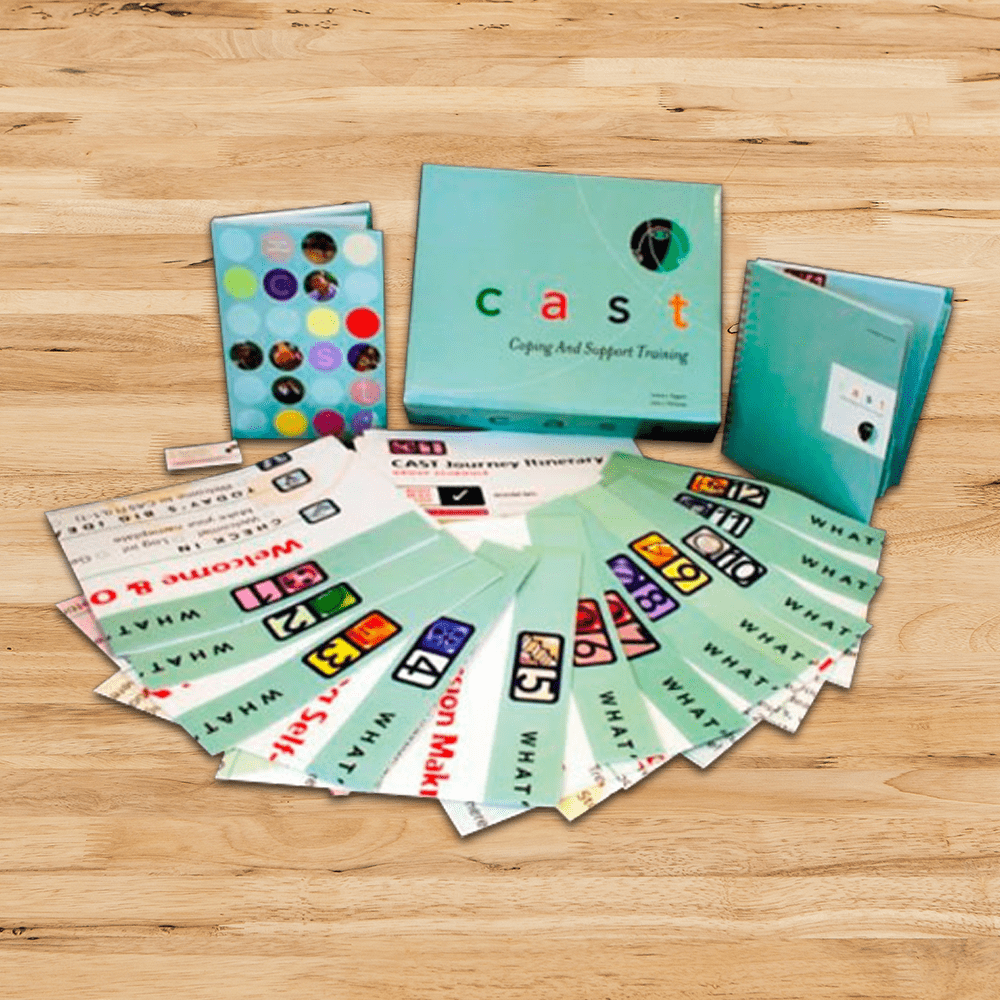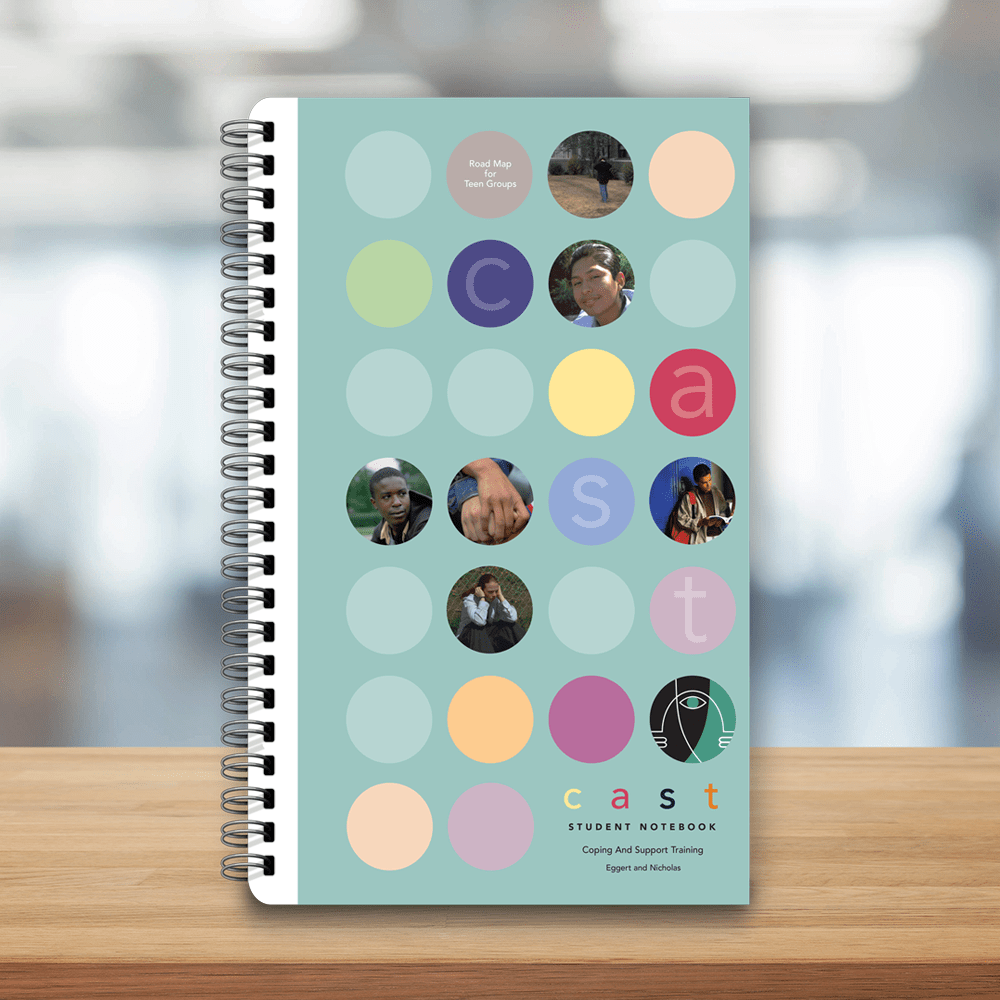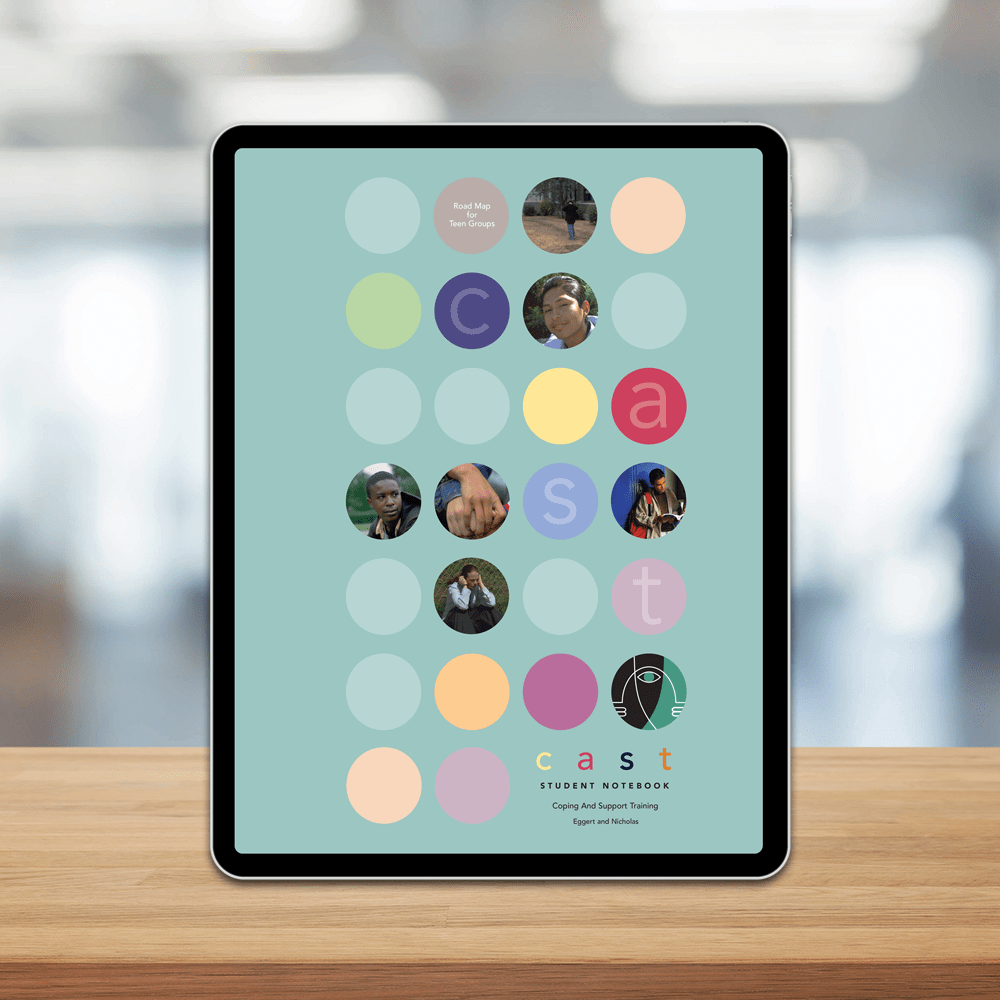This foundational training is a blended-learning experience, including independent, self-paced and interactive lessons as well as (3) live online, cohort-based webinars with practice and feedback.
Required Materials
Curriculum Materials must be purchased separately. A CAST Curriculum Kit is required for each CAST Facilitator and a CAST Student Notebook is required for each youth participant.
CAST Facilitator Materials
A Curriculum Kit is required at the Facilitator Training and must be purchased separately from the Training. The CAST Curriculum Kit has been updated in 2020, and now comes with digital and printed tools to aid in program delivery in any setting: virtual, in-person, or blended.
CAST Student Materials
Student Materials are consumable and often important for program graduates to keep to remember the skills and support gained in their time in the group. Please order one per youth participant.
CAST Coordinator Training
A Coordinator should be assigned to supervise your Facilitator(s) and support your program to ensure implementation fidelity. The CAST Coordinator Training prepares participants for important supportive tasks related to building infrastructure, coaching, supervision, and sustaining programming. Successful completion of the CAST Facilitator Training is a prerequisite for participation in the Coordinator Training. If you are a “team of one”, then you should complete both the Facilitator and Coordinator Trainings.
Verified Testimonials
“I love how the [CAST] program is set up. It takes the guesswork out of it. Love how it is designed so that the Materials (e.g., posters) can be used over and over.”
—Box Elder, MT
“[CAST] is a wonderful tool for the district. The curriculum is very thorough and self-explanatory.”
—Administrator, Philadelphia, PA
“CAST offers just what we have been looking for in a prevention program for our at-risk students. It is science-based and brief with proven success!”
—CAST Facilitator, Camrose, ALB
“An awesome tool for helping kids. Well presented, fabulous job! The [CAST] curriculum has great structure, activities, themes, and use of support teaching.”
—Seattle, WA





